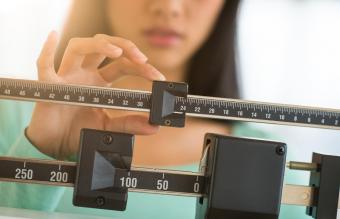
Losing weight is no easy task, especially when you have to cut out foods you love. Unfortunately, sweets and alcoholic beverages can hinder your weight loss efforts. The good news is you can still include an occasional drink or treat in your weight loss plan if you do so in moderation.
Calories in Sugar and Alcohol
Believe it or not, alcohol contains almost twice as many calories as sugar. Table sugar contains four calories in each gram, and alcohol provides seven calories per gram. However, the actual number of calories you're getting from sweets and alcoholic drinks varies. Adding sugary mixers to alcohol significantly boosts its calorie content. Below are examples of alcoholic drinks and sugary foods with corresponding calorie counts.
Below are the calorie counts for some common alcoholic drinks:
- 12 ounces or regular beer: 150 calories
- 12 ounces of light beer: 110 calories
- 12 ounces of dark beer: 168 calories
- 5 ounces of red wine: 105 calories
- 5 ounces of white wine: 100 calories
- 1. 5-ounce shot of distilled spirits: 100 calories
- 7 ounces of gin and tonic: 189 calories
- 7 ounces of a screwdriver: 208 calories
- 6 ounces of amaretto sour: 421 calories
- 8 ounces of pina colada: 312 calories
- 12 ounces of rum and coke: 361 calories
- 12 ounces of a mudslide: 820 calories
Listed below are calorie counts for some common sweets:
- 1 cup of vanilla ice cream: 274 calories
- One chocolate cream-filled snack cake with frosting: 200 calories
- One commercially prepared brownie: 227 calories
- Two chocolate chip cookies: 155 calories
- One slice of apple pie: 411 calories
- One can of soda (cola): 155 calories
- One serving (17 pieces) of Hershey's milk chocolate bites with almonds: 222 calories
- 1/4 cup of chocolate peanut butter M&Ms: 269 calories
Why Alcohol and Sugar Hinder Weight Loss
The biggest reason drinking alcohol and eating sugar hinders weight loss is because of the extra calories you're getting with little -- or no -- essential nutrients your body needs. Furthermore, sugar has addictive properties, so eating it makes you crave more sugary treats. Drinking alcohol before or with meals often increases food intake, but alcohol in moderate amounts isn't linked with obesity, according to a 2010 review published in Physiology and Behavior.
How Much Alcohol Can I Drink?
If weight loss is your goal, limit alcohol as much as possible or cut it out entirely. Mayo Clinic notes that for women, drinking in moderation means one drink daily. For men, two drinks per day is a moderate amount. If you choose to drink alcohol during weight loss, pick lower-calorie options like light beer, white wine, or a distilled spirit mixed with diet soda, club soda, lemon, or lime juice instead of higher-calorie mixers.
Sugar Recommendations
Don't consume more than 10 percent of your calories from added sugar, suggests the U.S. Food and Drug Administration. This means getting no more than 50 grams of sugar when eating 2,000 calories daily, a maximum of 40 grams of sugar when eating 1,600 calories, and just 30 grams (or less) of sugar when following a 1,200-calorie weight loss plan.
Calorie Guidelines for Weight Loss
Your individualized weight loss calorie needs vary based on your size, gender, and activity level. As a general rule, women need 1,200 to 1,500 calories per day to shed pounds effectively, and men require 1,500 to 1,800 calories daily, suggests the National Heart, Lung and Blood Institute. Or, simply cut 500 to 1,000 calories daily from your current intake by eliminating added sugar, alcohol, or both.
Bottom Line
You don't have to cut sweets and alcohol out of your diet entirely to lose weight. However, the fewer of these foods you consume the speedier your weight loss will be, and the better you'll feel. Sticking to your weight loss calorie allotment is most important.







